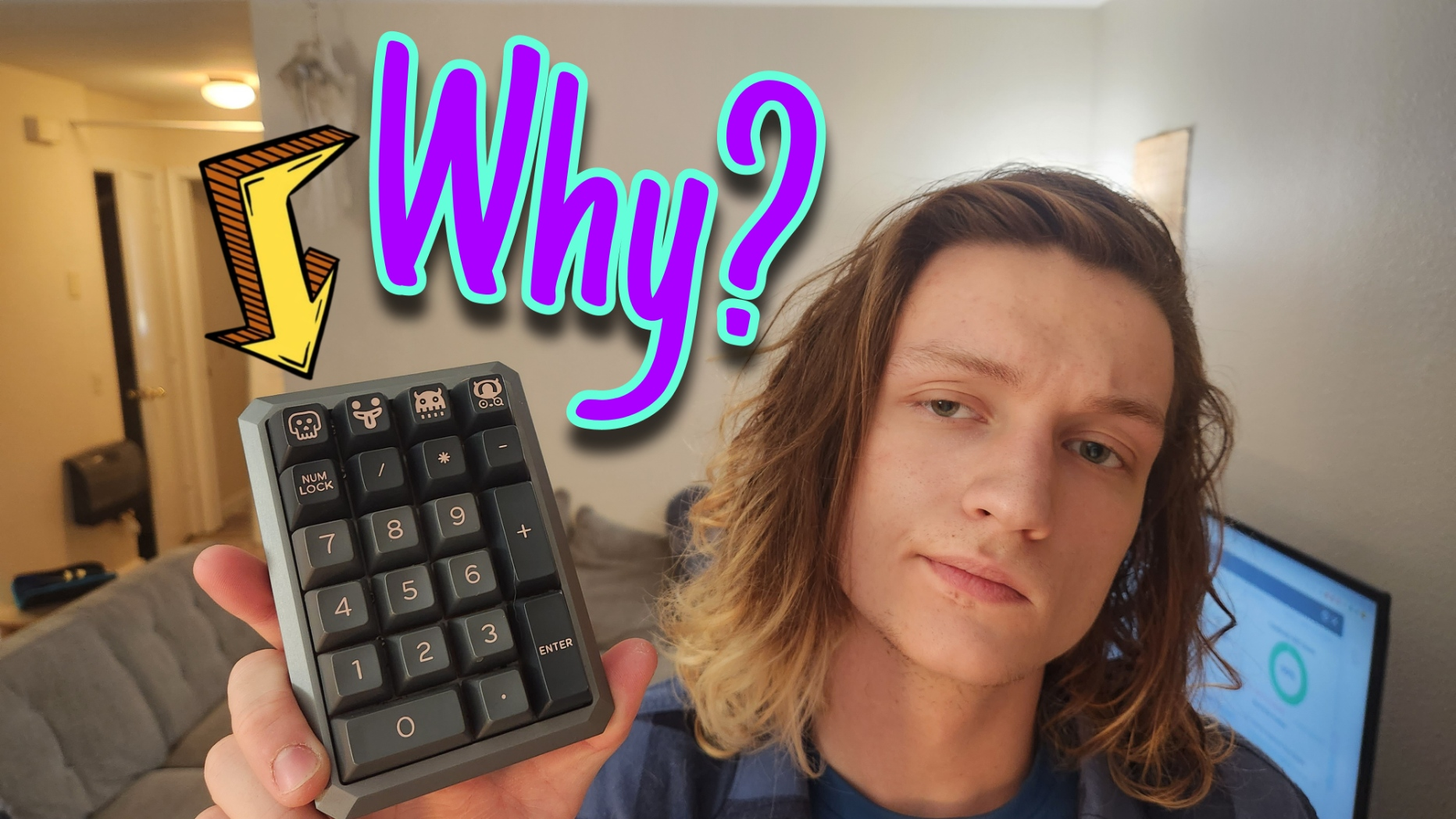Introduction: The Underrated & Misunderstood Numpad
At first glance, a standalone numpad might seem unnecessary. “I already have one built into my keyboard, why would I need another?” Or maybe you don’t use a numpad at all and assume it’s just extra clutter.
As work-from-home setups become more common, and people continue to chase clean, minimal setups, separate numpads are gaining popularity. Why? Because they offer something your built-in numpad can’t—versatility, customizability, and the ability to disappear when you don’t need them.
As someone who works in IT as well as games and creates primarily on my PC, I’m always looking for ways to refine my setup. And adding a separate numpad has been one of the simplest but most effective upgrades I’ve made.
But what if I told you it had a hidden superpower that most people completely overlook? One that turns this humble device into the ultimate secret weapon for your setup. Stick around and you’ll see how this overlooked tool can unlock a whole new level of productivity and control.
Reason 1. Minimalism & Desk Space
I originally looked into standalone numpads for a simple reason: I wanted the functionality of a numpad without the bulk of a full-sized keyboard.
A separate numpad = more room to breathe.
If you’ve ever smacked your hand on your keyboard during a particularly intense gaming session then this is a battle you know all to well. By switching to a compact keyboard and adding a numpad only when needed, you free up space, improve ergonomics, and give you the much needed room to hit those sick flicks 😉
This is especially useful for:
- Gamers who need extra mouse space for low DPI movements.
- Artists & designers who frequently use tablet or stylus setups.
- People who prefer a clean, minimal aesthetic without extra bulk.
Even if you’re not actively downsizing your setup, having control over your layout makes your desk feel less cluttered. And when you control how your workspace looks and functions, your efficiency improves.
Reason 2. More Versatility, Less Compromise
If you use a tenkeyless (TKL) or compact keyboard, you might already appreciate the extra desk space these layouts provide. A separate numpad lets you have it both ways—you can keep your workspace clean when gaming or working with a mouse but still have a numpad ready when you need it.
Some practical uses:
✔️ Flexible placement – Keep it on the left, right, or even off to the side.
✔️ Laptop convenience – Use it as a mobile input device when working remotely.
✔️ Modular setup – Remove it entirely when it’s not needed.
Instead of being a permanent part of your keyboard, a separate numpad adapts to your workflow, hiding away when unwanted and reappearing whenever and wherever you need. It’s this flexibility that transformed what was often a hindrance into an active and appreciated member of my setup.
Reason 3. Customization: Make It Truly Yours
Not only are you afforded the ability to eliminate clutter and free up some ever-valuable desk real estate, you can also customize to your hearts content.
Want something with the loudest switches known to man and RGB lighting brighter than a thousand suns? Done.
Need something subtle and sleek to match that MacBook aesthetic? No problem.
How about a retro atomic purple plastic to hit all those nostalgia buttons? Why not?
This is a rabbit hole many a keyboard enthusiast know all to well. And it goes beyond just colors and styles. Enthusiasts have taken numpad customization to another level by adding:
- Knobs for volume control or scrolling through timelines.
- Sliders for fine-tuned adjustments.
- Custom key layouts for better productivity shortcuts.
At this point, the line between a numpad and a macropad starts to blur—which brings us to the final and most exciting reason. The “hidden superpower” that transforms our humble workhorse into a dynamo of productivity.
Reason 4. Tapping into the Power of Macropads
Maybe you don’t crunch numbers all day, and a traditional numpad doesn’t sound useful. But what if you could turn it into a fully customized control panel?
That’s exactly what a macropad is—a small keyboard-like device where every key (or knob) can be mapped to a specific function. A separate numpad can double as a macropad, making it a powerful tool for:
🎮 Gaming – Bind MMO hotkeys or complex key combos for quick execution.
🎥 Streaming – Control scene transitions, play sound effects, or trigger overlays.
🎨 Art & Design – Adjust brush sizes, switch tools, or control opacity with knobs.
🎧 Audio Production – Use sliders and buttons to adjust volume and effects.
✂️ Editing – Set up shortcuts for timeline navigation, cutting, and effects application.
With software like QMK, VIA, or AutoHotkey, you can customize every button on your numpad/macropad to fit your workflow. Move over Stream Deck 😉
And because there are no “rules” for macropad customization, you can go as simple or as crazy as you like. Some people build them with nothing but knobs for music production, while others add tiny OLED screens to display real-time information. The possibilities are limitless.
Final Thoughts: Is a Separate Numpad Worth It?
I’m always looking for ways to adapt my setup and workflows to better suit me and the tasks I perform, but at the end of the day I just think numpads—and their cousin macropads—are just kinda neat. They’re one of those small, overlooked tools that can make a huge impact on workflow, gaming, and creativity once you start using them in a way that fits your needs.
If you’re thinking about adding one to your setup, my recommendation is to start simple. Pick up a basic numpad and experiment. Try different placements, remap some keys, and see how it fits into your daily routine. From there, the possibilities only get more exciting.
Have you used a separate numpad or macropad before? If so, how has it changed your workflow? I’d love to hear what you guys think.
I’ll link some of my favorite numpads and macropads below if you’re interested. And if you’d like me to review the ones I use or go more in-depth on macropad usage, let me know in the comments!
Thanks for reading—I’ve been Ben, and maybe I’ll see you in another post (or video).


Great article about external uses for a numpad.. I’ve never really given it much thought over the years, and am used to the size, and layout my hands land in, with the numpad in place. It also feel “right” to me, but I can totally see where having it external could open up a world of options. Just thinking about a laptop and how a full keyboard puts your hands off center to the screen, while one without a numpad the keys are centered. A numpad could easily be tossed into your bag and used “when necessary” or when you want to.
After watching a video about sequencing today, I can say that having that function to the side, customizing every button to basically be a different sample, would be pretty stellar…